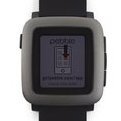Topics
-
- 0 replies
- 21.1k views
- Updated
-
- 7 replies
- 838 views
- Updated
-
- 2 replies
- 859 views
- Updated
-
- 2 replies
- 891 views
- Updated
-
- 1 reply
- 1.4k views
- Updated
-
- 3 replies
- 2.9k views
- Updated
-
- 2 replies
- 2.6k views
- Updated
-
- 2 replies
- 2.8k views
- Updated
-
- 15 replies
- 4.3k views
- Updated
-
- 8 replies
- 3.6k views
- Updated
-
- 2 replies
- 2.9k views
- Updated
-
- 0 replies
- 2.3k views
- Updated
-
- 0 replies
- 1.8k views
- Updated
-
- 0 replies
- 1.4k views
- Updated
-
- 4 replies
- 2.7k views
- Updated
-
- 4 replies
- 2.2k views
- Updated
-
- 4 replies
- 3.3k views
- Updated
-
- 0 replies
- 1.1k views
- Updated
-
- 4 replies
- 2.5k views
- Updated
-
- 8 replies
- 1.5k views
- Updated
-
- 10 replies
- 2.5k views
- Updated
-
- 69 replies
- 25.5k views
- Updated
-
- 162 replies
- 39.8k views
- Updated
-
- 7 replies
- 1.3k views
- Updated
-
- 5 replies
- 1.5k views
- Updated








